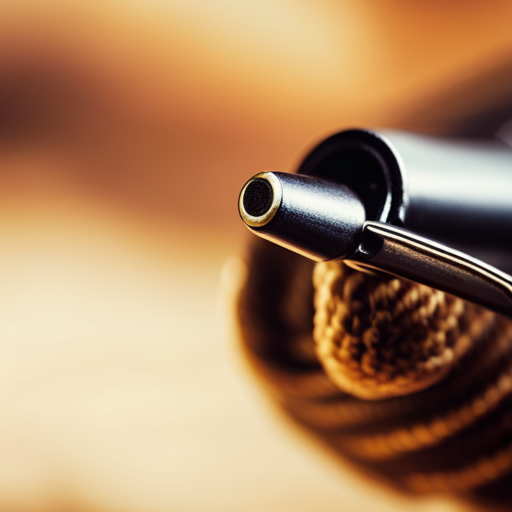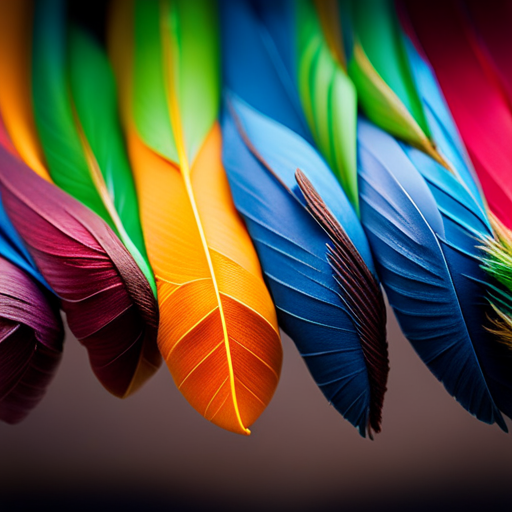As fly fishing enthusiasts cast their lines into the sparkling waters, the choice of natural versus synthetic dubbing can make a significant impact on the success of their endeavors.
In the world of fly tying, the debate rages on about the benefits of each. This article delves into the distinct advantages of natural and synthetic dubbing, exploring the durability, lifelike movement, and customization options offered by each, providing insight for anglers seeking to elevate their craft.
Natural Dubbing Advantages
Natural dubbing offers unparalleled advantages in terms of fly durability and lifelike appearance. When compared to synthetic alternatives, natural dubbing materials such as fur, wool, and feathers have a natural luster and texture that can enhance the overall realism of fly patterns. This can be particularly beneficial when imitating specific insect species, as the natural dubbing can closely mimic the appearance and movement of the targeted insects, thereby increasing the attractiveness of the fly to the fish.
Moreover, natural dubbing often contains natural oils and fibers that can act as insect repellents, providing an added advantage for fly fishermen in insect-prone areas. Additionally, as the world increasingly shifts towards eco-friendly alternatives, natural dubbing materials present an environmentally sustainable option for fly tying. By utilizing renewable materials and reducing the reliance on synthetic products, fly tyers can contribute to the conservation of natural resources and the reduction of environmental impact.
Ultimately, the unique properties of natural dubbing not only improve the functionality and effectiveness of fly patterns but also align with the growing preference for eco-friendly and sustainable practices within the fly fishing community.
Synthetic Dubbing Advantages
Synthetic dubbing offers a consistent and customizable texture that can be advantageous in creating durable and precise fly patterns for anglers. Unlike natural dubbing, synthetic materials are often more resilient and can withstand repeated use without losing their shape or texture. This durability is particularly advantageous for anglers targeting fish in rugged terrain or engaging in extended fishing trips.
Additionally, synthetic dubbing allows for precise application techniques, enabling fly tiers to achieve the exact look and feel they desire for their patterns.
In terms of environmental impact and sustainability, synthetic dubbing can offer benefits. While natural dubbing materials are sourced from animal fur, synthetic dubbing is typically made from materials that are readily available and can be produced without relying on animal resources. This can be appealing to environmentally-conscious anglers who are seeking more sustainable alternatives.
Furthermore, the consistent quality of synthetic dubbing reduces waste, as it is less prone to damage or deterioration during the tying process. Overall, the versatility, durability, and potential environmental benefits make synthetic dubbing a valuable option for fly tiers looking to create effective and sustainable fly patterns.
Durability and Longevity
With its ability to maintain texture and shape over extended use, dubbing made from synthetic materials offers anglers a reliable option for creating durable and long-lasting fly patterns. Synthetic dubbing provides several advantages in terms of durability, longevity, maintenance, and environmental impact:
-
Durability: Synthetic dubbing is highly durable and can withstand numerous fish strikes and water exposure without losing its texture or color. This durability ensures that the fly patterns tied with synthetic dubbing remain effective and intact for a longer period.
-
Longevity: Unlike natural dubbing, synthetic materials do not degrade over time, ensuring that the fly patterns maintain their appearance and effectiveness even after prolonged use. This longevity makes synthetic dubbing a cost-effective choice for anglers, as they do not have to frequently replace or repair their flies.
-
Maintenance: Synthetic dubbing requires minimal maintenance, as it does not absorb water or become easily damaged. This ease of maintenance simplifies the care and upkeep of fly patterns tied with synthetic dubbing.
-
Environmental Impact: Synthetic materials used in dubbing are often more sustainable and environmentally friendly than their natural counterparts. This reduced environmental impact aligns with the principles of responsible angling and conservation efforts.
Lifelike Movement and Realism
The lifelike movement and realism of the fly pattern can be enhanced by incorporating natural materials such as fur or feathers. When natural materials are used in fly tying, the resulting fly pattern exhibits a lifelike movement in the water, imitating the natural movement of insects or small prey. The use of fur or feathers provides a realistic appearance, as these materials have a natural texture and coloration that closely resembles the insects or small creatures that fish feed on. This realism can be particularly effective in enticing wary or selective fish, as the natural appearance of the fly pattern increases the likelihood of it being perceived as genuine prey, thus improving the chances of a successful catch.
The lifelike movement and realistic appearance achieved through the use of natural materials play a crucial role in the effectiveness of fly patterns. However, another important aspect to consider is the color range and customization of fly patterns, which further contributes to their appeal and functionality.
Color Range and Customization
Enhancing the lifelike movement and realism of fly patterns through the use of natural materials involves considering the color range and customization to further optimize their appeal and functionality. When it comes to color range and customization, natural dubbing offers a wide array of options to cater to the specific needs of fly patterns.
Here are some key considerations for customizing natural dubbing:
-
Custom Color Options: Natural dubbing materials come in a variety of colors, allowing fly tyers to create custom color blends to match specific insect species or local fishing conditions.
-
Material Options: With natural dubbing, fly tyers have the flexibility to combine different materials such as rabbit fur, seal fur, and various feathers to achieve the desired texture, color, and translucency for their fly patterns.
-
Blending Techniques: The ability to blend different natural dubbing materials enables fly tyers to create unique and realistic color variations, enhancing the visual appeal and imitative properties of the flies.
-
Dyeing Capabilities: Natural dubbing materials can be easily dyed to achieve custom colors, providing fly tyers with the freedom to experiment and create patterns tailored to specific fishing scenarios.
Frequently Asked Questions
Are There Any Environmental Concerns Associated With the Production or Use of Natural or Synthetic Dubbing Materials?
Environmental impact and sustainability are central concerns in dubbing material production. The production methods, whether natural or synthetic, can have varying consequences. Material customization also plays a role in the overall environmental footprint of dubbing materials.
Can Natural or Synthetic Dubbing Be Used Interchangeably in Fly Tying, or Are There Specific Situations Where One Is Preferred Over the Other?
Natural and synthetic dubbing can be used interchangeably in fly tying, with each having specific advantages. Application techniques and fly patterns, as well as fishing conditions and material properties, influence the choice between the two.
How Do Natural and Synthetic Dubbing Materials Differ in Terms of Price and Availability?
When comparing natural and synthetic dubbing materials, differences in price and availability are evident. Natural dubbing tends to be pricier and may have limited availability, while synthetic options are more cost-effective and widely accessible.
Are There Any Special Considerations for Storing or Maintaining Natural or Synthetic Dubbing Materials to Ensure Their Longevity?
When considering the storage and maintenance of natural or synthetic dubbing materials, attention to factors like humidity, temperature, and light exposure is vital in ensuring longevity. Quality comparison between the two types is also essential.
Can Natural or Synthetic Dubbing Be Dyed or Customized to Match Specific Insect or Baitfish Colors?
Custom dyeing allows for matching insect or baitfish colors using both natural and synthetic dubbing. Natural dubbing offers a unique texture and color variation, while synthetic dubbing provides consistency and durability. Understanding their properties is essential for effective customization.
Conclusion
In conclusion, the comparison between natural and synthetic dubbing highlights the advantages of each.
Natural dubbing offers lifelike movement and a wide color range for customization, while synthetic dubbing provides durability and longevity.
Both options have their benefits, and the choice ultimately depends on the specific needs of the angler.
Just as different types of bait attract different fish, the choice of dubbing can greatly impact the success of fly fishing.




